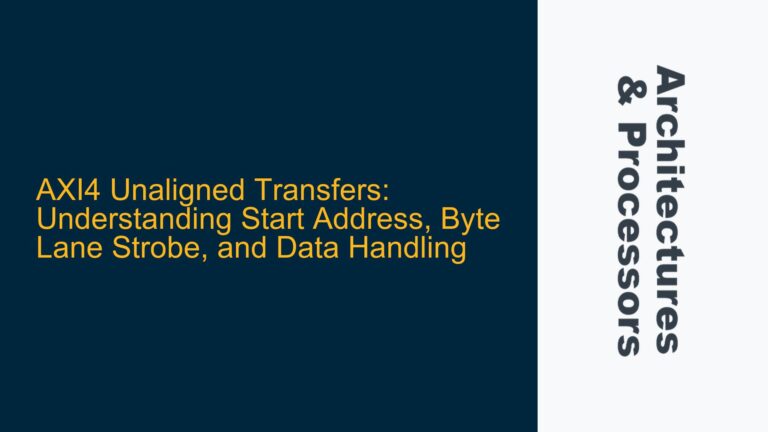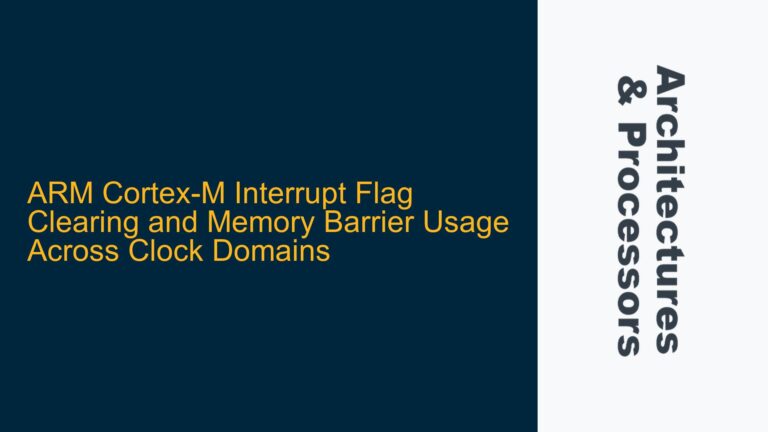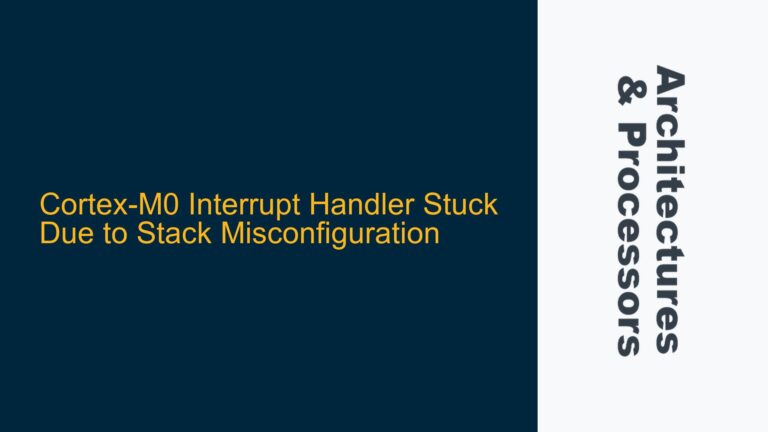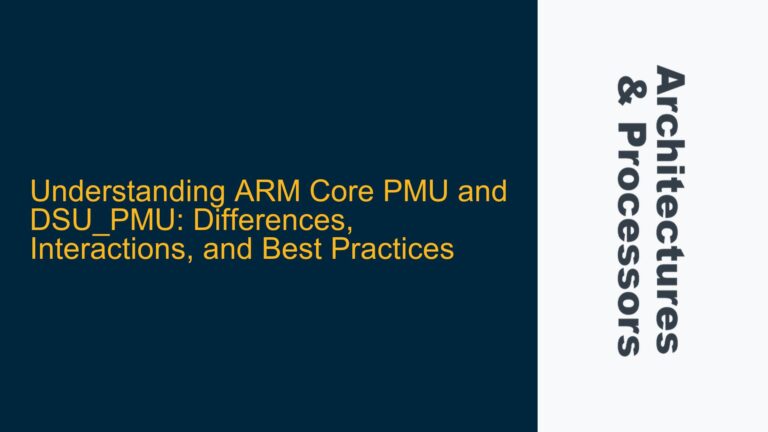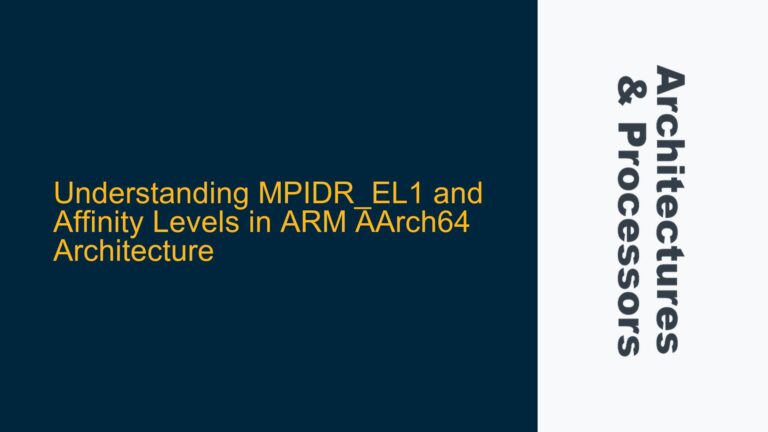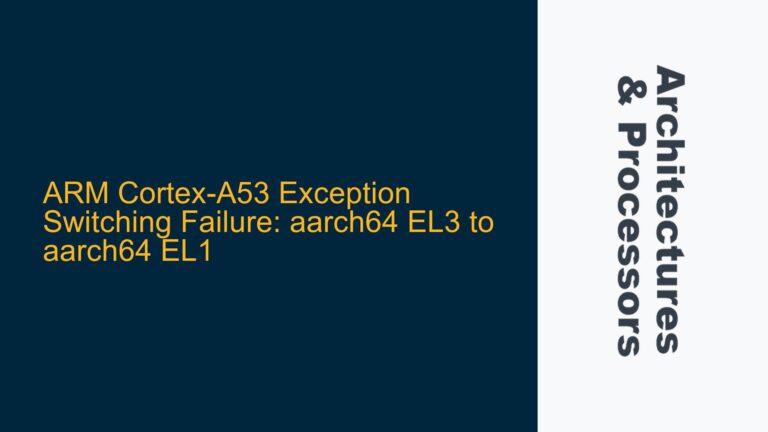ARM CCA Realm VM Device Assignment Limitations in Current RME Architecture
The ARM Confidential Compute Architecture (CCA) and its Realm Management Extension (RME) introduce a robust framework for secure virtualization, enabling the creation of isolated execution environments known as Realms. These Realms are designed to protect sensitive workloads from both the hypervisor and the non-secure operating system. However, a critical limitation in the current RME architecture is the lack of support for assigning non-PE (Processing Element) requesters, such as IO devices or accelerators, to Realm Virtual Machines (VMs). This restriction is explicitly stated in the RME documentation, which clarifies that non-PE requesters cannot access the Realm Physical Address Space (PAS) in the current version of the architecture.
The Realm PAS is a secure memory space that is exclusively accessible to the Realm VM and its associated PE. It is designed to ensure that sensitive data remains isolated from the non-secure world and the hypervisor. However, the inability to assign non-PE devices to the Realm PAS poses a significant challenge for workloads that require direct device access for performance or functionality reasons. For example, accelerators such as GPUs, NPUs, or custom hardware accelerators often need direct memory access (DMA) to operate efficiently. Without support for device assignment, these workloads must rely on indirect access mechanisms, which can introduce latency and complexity.
The limitation stems from the architectural design of the RME, which prioritizes security and simplicity in its initial implementation. Allowing non-PE devices to access the Realm PAS would require additional hardware and software mechanisms to ensure that these devices adhere to the same security guarantees as the PE. This includes enforcing memory isolation, managing device permissions, and handling potential side-channel attacks. The current architecture does not include these mechanisms, making it impossible to safely assign devices to Realm VMs.
Despite this limitation, ARM has indicated that device assignment to Realm VMs is a planned feature for future updates. This is evidenced by slides from the HASP 2021 workshop, which suggest that future versions of the RME architecture will include support for non-PE device access. This aligns with the broader industry trend towards confidential computing, where secure device assignment is becoming increasingly important for workloads such as machine learning, data analytics, and financial processing.
Security and Architectural Challenges in Enabling Non-PE Device Access
The primary challenge in enabling non-PE device access to the Realm PAS lies in maintaining the security guarantees of the RME architecture. The RME is designed to provide strong isolation between Realms, the hypervisor, and the non-secure world. Allowing non-PE devices to access the Realm PAS introduces several potential security risks that must be addressed.
One of the key risks is the possibility of unauthorized memory access. Non-PE devices, such as DMA controllers or accelerators, typically operate independently of the PE and may have direct access to system memory. If these devices are granted access to the Realm PAS, they could potentially read or modify sensitive data without the PE’s knowledge. To mitigate this risk, the RME architecture would need to implement hardware-enforced access controls that restrict device access to specific regions of the Realm PAS. This could involve extending the existing memory protection mechanisms, such as the Memory Protection Unit (MPU) or the Memory Management Unit (MMU), to support device-level permissions.
Another challenge is ensuring that non-PE devices do not introduce side-channel vulnerabilities. Side-channel attacks exploit indirect information leakage, such as timing variations or power consumption patterns, to infer sensitive data. Devices with access to the Realm PAS could inadvertently leak information through these channels, compromising the security of the Realm. Addressing this issue would require careful design of the device interface and the implementation of countermeasures, such as noise injection or access pattern obfuscation.
Additionally, the RME architecture would need to provide mechanisms for managing device permissions and revoking access when necessary. This includes the ability to dynamically assign and deassign devices to Realms, as well as the ability to enforce access policies based on the current state of the system. For example, a device assigned to a Realm should lose access to the Realm PAS when the Realm is destroyed or when the device is reassigned to another Realm. Implementing these mechanisms would require significant changes to the RME architecture, including the addition of new hardware features and software interfaces.
Finally, enabling non-PE device access would also impact the performance and complexity of the system. Devices with direct access to the Realm PAS would need to interact with the RME’s security mechanisms, which could introduce additional latency and overhead. Furthermore, the software stack would need to be extended to support device assignment, including the hypervisor, the Realm Manager, and the device drivers. This would increase the complexity of the system and require careful coordination between hardware and software components.
Future Directions and Recommendations for Secure Device Assignment in ARM CCA
While the current RME architecture does not support device assignment to Realm VMs, ARM has indicated that this feature is planned for future updates. To prepare for this enhancement, developers and system architects should consider several key factors and best practices.
First, it is important to understand the security requirements of the workloads that will run in Realm VMs. Workloads that require direct device access, such as machine learning or data processing, will need to be carefully evaluated to ensure that they can operate securely within the constraints of the RME architecture. This includes assessing the potential risks of side-channel attacks and unauthorized memory access, as well as identifying the specific devices that will need to be assigned to the Realm.
Second, developers should stay informed about updates to the RME architecture and the ARM CCA framework. ARM has a history of providing detailed documentation and guidance for new features, and it is likely that future updates will include comprehensive instructions for enabling device assignment. By keeping up to date with these developments, developers can ensure that they are prepared to take advantage of new capabilities as they become available.
Third, it is recommended to explore alternative approaches for enabling device access in the current architecture. While direct device assignment is not supported, there are other mechanisms that can be used to provide limited access to devices. For example, the hypervisor or the Realm Manager could act as an intermediary, forwarding requests between the device and the Realm VM. Although this approach introduces additional latency and complexity, it may be a viable solution for certain workloads.
Finally, developers should consider the broader ecosystem implications of device assignment in ARM CCA. This includes the impact on device drivers, firmware, and system software, as well as the potential need for new tools and debugging techniques. By taking a holistic view of the system, developers can ensure that they are prepared to address the challenges and opportunities of secure device assignment in ARM CCA.
In conclusion, while the current RME architecture does not support device assignment to Realm VMs, this feature is expected to be included in future updates. By understanding the security and architectural challenges, staying informed about ARM’s roadmap, and exploring alternative approaches, developers can prepare for the eventual introduction of this capability and ensure that their workloads can take full advantage of the ARM CCA framework.

